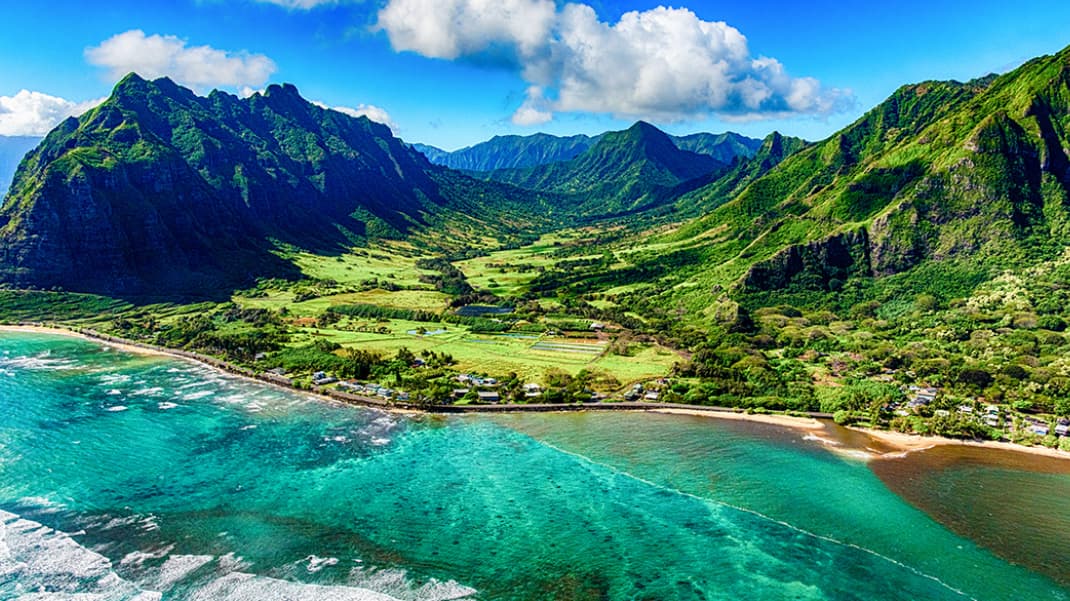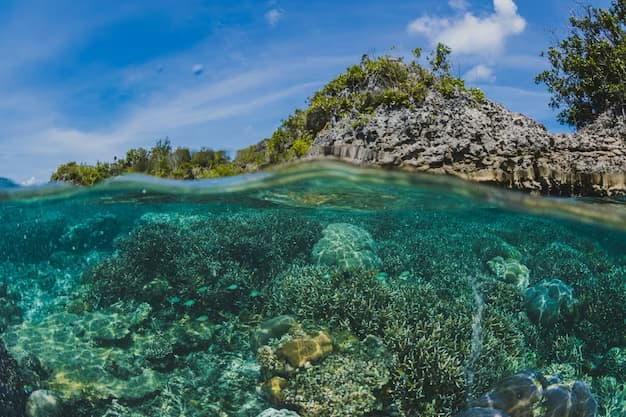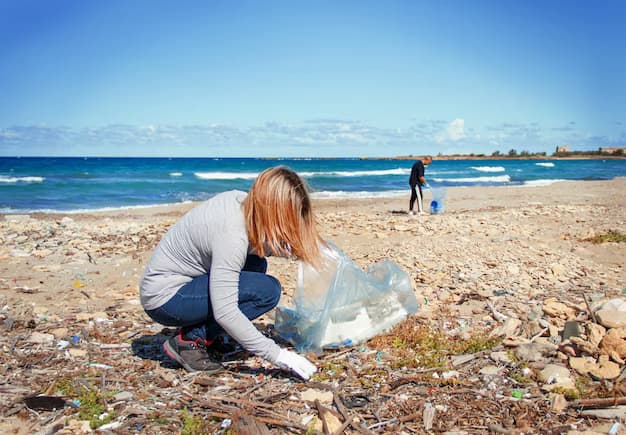Hawaii, often celebrated as a verdant oasis teeming with spectacular waterfalls, pristine oceans, and breathtaking waves, is a marvel of nature whose origins are deeply rooted in volcanic activity. This archipelago’s formation is a tale of the earth’s fiery underbelly, where millions of years ago, a hotspot in the mantle allowed magma to ascend, creating a series of volcanoes. As tectonic plates shifted, these volcanoes emerged as the islands now known as Hawaii. This narrative delves into the mysteries and wonders that have sculpted the Hawaiian Islands.
Volcanoes and Their Role in Shaping the Hawaiian Islands: How Did Hawaii Form?
Among the 137 islands that comprise the Hawaiian chain, eight stand out as major islands, each a shield volcano. These shield volcanoes are distinguished by their broad, gentle slopes, unlike their more steeply inclined counterparts. The creation of Hawaii is a fascinating geological phenomenon rooted in the movement of tectonic plates and volcanic eruptions over millions of years.
How Did Hawaii Form?
The creation of volcanoes, a cornerstone in the formation of the Hawaiian Islands, is an intricate process governed by the Earth’s geological dynamics. This phenomenon can be primarily attributed to four key scenarios:
- Subduction Zones: In these regions, the collision of tectonic plates results in one plate being thrust beneath another. This action generates significant pressure and heat, melting the subducted plate and creating magma that rises to the surface, forming volcanoes;
- Hotspots: These are areas within the Earth’s mantle that are significantly hotter than their surroundings. The elevated temperatures cause the mantle to melt, forming magma that ascends through the crust to create volcanoes. The Hawaiian Islands are a classic example of hotspot-driven volcanic activity;
- Divergent Boundaries: At these boundaries, tectonic plates move away from each other, reducing the pressure on the mantle below and allowing magma to rise and solidify as it reaches the surface. This process can create long chains of volcanoes and volcanic ridges;
- Intraplate Volcanism: This type of volcanism occurs within a tectonic plate rather than at its boundaries. The causes of intraplate volcanism are less understood but can include mantle plumes or hotspots that create volcanoes away from the usual tectonic plate boundaries.
The interplay of these geological conditions underpins the diverse volcanic landscape on Earth. In the case of the Hawaiian Islands, the presence of a powerful hotspot beneath the Pacific Plate has been instrumental in their creation. Over millions of years, as the Pacific Plate moved over this stationary hotspot, a series of volcanic eruptions occurred, leading to the formation of the island chain. This process illustrates the dynamic nature of Earth’s geology, where the forces of plate tectonics and mantle dynamics combine to shape the planet’s surface in profound ways.
Tectonic Plates and the Creation of Island Chains
Tectonic plates, the giant slabs of the Earth’s crust, glide over the mantle, leading to diverse geological phenomena, including volcanic eruptions and tsunamis. Their interaction can result in collisions, subductions, divergences, or lateral movements. Islands emerge as magma, forced upwards by volcanic hotspots beneath the ocean, cools and solidifies. Over millennia, this process repeats, forming chains of islands as new volcanoes are born and old ones fade into dormancy.
The Mystery of Volcanic Hotspots and Hawaii’s Birth
Volcanic hotspots are fascinating features where the Earth’s mantle is hot enough to melt rock, forming magma that rises to the surface. These hotspots create weak zones in the mantle, allowing magma to escape as tectonic plates pass overhead. The Hawaiian Islands owe their existence to such a hotspot, with the tectonic plates’ movement over time leading to the formation of new volcanoes and the extension of the island chain.
Ongoing Formation of the Hawaiian Islands
The Hawaiian Islands continue to evolve, with new islands gradually emerging from the ocean depths. This slow yet relentless process is evidenced by the two active volcanoes on the Big Island, signaling that Hawaii’s growth is far from over. As tectonic plates shift, these volcanoes will eventually become dormant, making way for new volcanic activity and island formation.
Volcanic Activity and Its Impact on Hawaii
Hawaii’s volcanic activity is a spectacle of nature’s power, with Mauna Loa and Kilauea being particularly noteworthy. Mauna Loa, the largest volcano on Earth by volume, last erupted in 1984, while Kilauea has been erupting continuously since 1983, including a significant eruption in 2018 that reshaped the landscape. These eruptions are a reminder of the dynamic forces that continue to shape the Hawaiian Islands.
Frequently Asked Questions
The Hawaiian Islands’ uniqueness lies not just in their volcanic origin but also in their isolation, which has fostered a remarkable evolutionary theatre. This isolation has resulted in a high degree of endemism, with many species found nowhere else on Earth. The islands’ diverse ecosystems range from tropical rainforests to volcanic deserts, each supporting unique communities of plants and animals. Furthermore, the rich cultural heritage of the Hawaiian people, who have lived on these islands for centuries, adds a profound human dimension to the islands’ natural beauty. Their traditions, language, and customs are deeply intertwined with the land and the sea, reflecting a unique blend of natural wonder and human history. This combination of geological uniqueness, biological diversity, and cultural richness makes the Hawaiian Islands a truly exceptional place on our planet.
Beyond Hawaii, the Earth’s surface is punctuated by other volcanic hotspots, each contributing to our planet’s dynamic geology. Yellowstone, for example, is not just a hotspot but also a supervolcano, capable of eruptions of cataclysmic proportion. The East African Rift showcases how tectonic forces are pulling Africa apart, leading to significant volcanic and seismic activity. The Galapagos Islands, similar to Hawaii, are a hotspot that has given rise to unique species that inspired Charles Darwin’s theory of evolution by natural selection. Iceland, straddling the Mid-Atlantic Ridge, offers a rare glimpse into volcanic processes at a divergent tectonic boundary. Each of these hotspots not only shapes the physical landscape but also influences local ecosystems and human societies, highlighting the powerful and varied impact of volcanic activity across the globe.
Volcanic activity has sculpted Hawaii’s environment, creating fertile soils that support lush vegetation and diverse agricultural endeavors, from tropical fruit farms to the iconic Kona coffee plantations. These eruptions also contribute to the formation of new land, as seen with the recent lava flows on the Big Island that extended the island’s shoreline. However, volcanic emissions can also pose challenges, such as vog (volcanic smog), which affects air quality and can have health implications for residents and visitors alike. Additionally, the dynamic landscape shaped by volcanism attracts millions of tourists each year, fueling the local economy but also necessitating sustainable management to protect natural resources. The constant interplay between volcanic activity and the environment exemplifies the balance between beauty and hazard that defines the Hawaiian Islands.
The genesis of the Hawaiian Islands is a story that stretches back over tens of millions of years, a testament to the slow yet relentless forces of geology. Kure Atoll, the oldest in the chain, marks the beginning of this process, while the Big Island represents the latest chapter in an ongoing story of creation. The age gradient of the islands, from oldest to youngest, maps the movement of the Pacific Plate over the stationary hotspot, providing a clear timeline of volcanic activity. This process of island formation and erosion, coupled with the rise of new volcanic islands, highlights the dynamic and ever-changing nature of the Earth’s surface. The Big Island’s continued growth signals that the story of the Hawaiian Islands is far from complete, with the forces of nature continuing to mold this unique archipelago for millennia to come.



